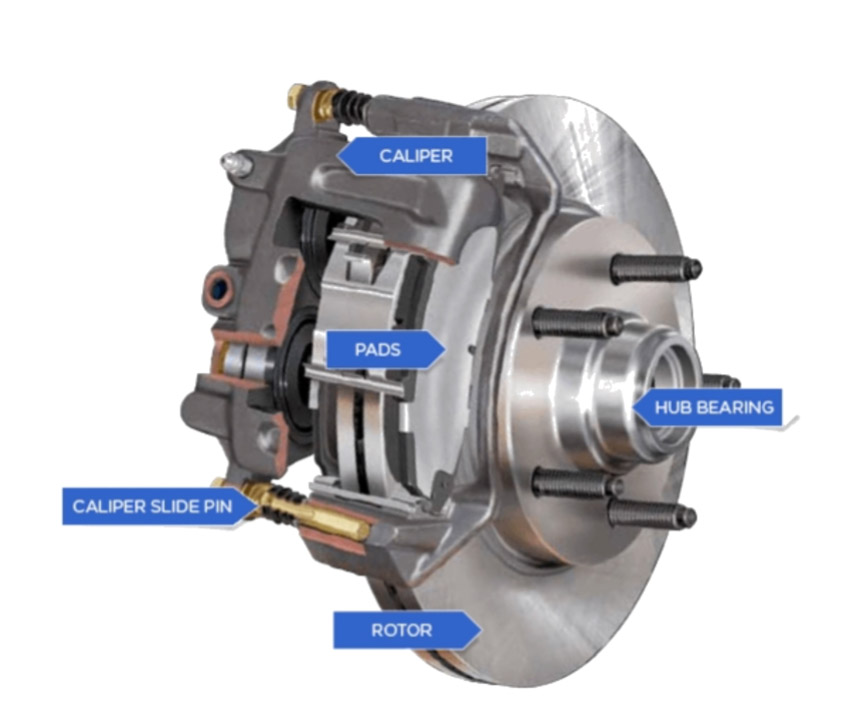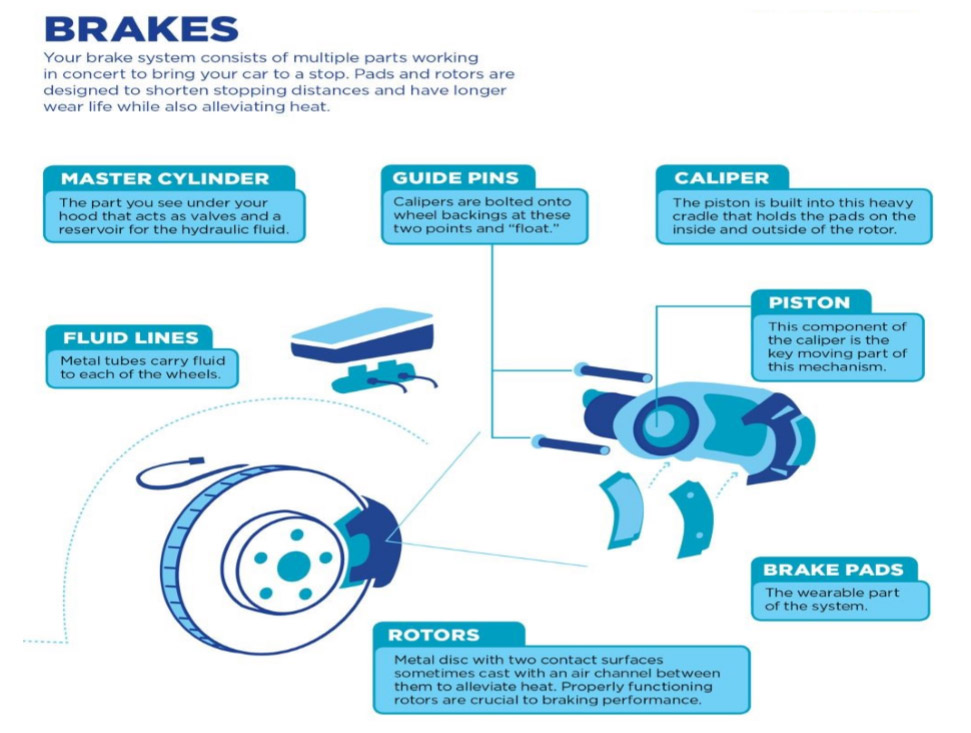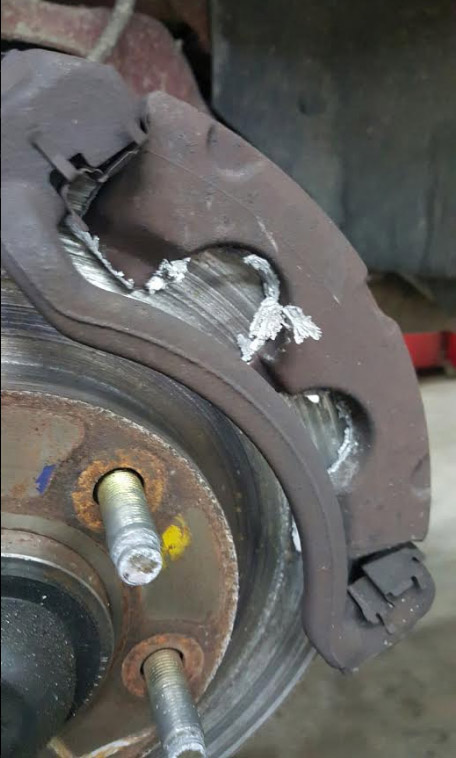
The above graphic shows some common parts of the brake.
The brake system of your vehicle is by far the most important safety system that it has. Being able to slow down or stop at a moments notice will help to avoid an incident or accident. Improperly working brakes will not do the job they are designed to do and will not be as effective when needed, especially in a panic stop situation. (ask anyone who’s ever encountered a deer late at night!) You need to be able to slow down and stop.
According to the Missouri Driver’s Manual:
Your stopping distance equals your reaction distance plus your braking distance. If you are driving fast, are very tired, or if your vehicle has bad brakes, you will need more space to stop your vehicle. The following distance equals your reaction distance plus your vehicle’s braking distance at different speeds. The reaction distance is the distance you travel after you see a danger and before you apply your brakes. The braking distance is the distance you travel after you apply your brakes and before your vehicle comes to a stop. This math is assumes the braking distance for a vehicle with good brakes and tires, in good weather and on a good road.
Your brakes should be regularly inspected, we recommend scheduling an appointment with Hillside Auto Repair. We will test drive the vehicle to see how the brake system functions. Part of our service includes performing an actual visual inspection, measuring pad and shoe thickness, check for even wear of the pads and shoes, check rotors for run out and hot spots, check hardware to make sure it is working properly and that it is adjusted properly. Our techs will make sure the wheel cylinders, brake lines and brake master cylinder are not leaking, inspect calipers for wear, free movement and fluid leaks, and check the level and condition of the brake fluid. We will also inspect for proper routing and placement of the brake and antilock brake sensors.

All of these components must be in good shape and working properly for the vehicle to have 100% brake system effectiveness while driving. For instance, something that seems simple is the brake fluid, it can get contaminated over time with absorption of moisture and copper, this can decrease the effectiveness of the hydraulics within your brake system causing a less responsive brake pedal to the touch or feel, causing delay or reduction in braking power.
We recommend having your brake system inspected with each oil change or at minimum every 6 months. Then if the inspection reveals any issues with the brake system for your own safety and the safety of others, you should have it promptly repaired. Remember, the cost of prevention is always less than that of an accident!

Caliper cutting into the rotor of a Ford Mustang, customer wasn’t in for a brake inspection, they weren’t even aware of the issue! This is a major safety concern that we addressed.
Over time and use, parts of your brake system can begin to deteriorate. You may notice that it takes longer to brake, that the pedal “feels” different. You may hear squeaks or feel vibrations. Or, scarily enough, you may not notice at all. That’s why it’s so important to have your brakes looked at.
There are lots of regulations regarding the inspection of brakes in the State of Missouri. Here are a few that can cause your vehicle to be rejected (or fail) during their required state inspections:
- Brake pedal moves slowly toward the toe board, indicating fluid leakage, while pedal pressure is maintained for one (1) minute
- Master cylinder gasket is torn or misshaped.
- There are substantial cracks on the friction surface extending to the open edge of the drum or to the edge of a disc
- A brake drum or disc has external cracks
- A brake lining is worn into the friction surface of the brake drum where the brake drum cannot be removed after loosening the adjusting screw (backing off of the self-adjusting mechanism)
- Thinnest point of bonded lining is less than a one-thirty-second inch (1/32″)
- Rivets are loose or missing or if lining or pad is not firmly attached to shoe
- Riveted lining is worn to less than one-thirty-second inch (1/32″) above any rivet head at the thinnest point
- Wire is visible on the friction surface of wire-backed linings
- Lining is broken or cracked, does not include heat cracks
- A primary or secondary shoe and the lining is improperly installed
- Bonded pads are worn at any one (1) point to less than one-thirty-second inch (1/32″)
- Riveted pads are worn at any one (1) point to less than five-thirty-seconds inches (5/32″). If unable to determine if pads are riveted or bonded, pads will be considered to be bonded pads
- Hoses or tubing leak or are cracked, chafed, flattened, restricted, bubbled, improperly installed, or insecurely fastened
- Mechanical parts are missing, broken, or badly worn
- There is excessive friction in the brake pedal, linkage, or other components
- Brake components are misaligned, binding, obstructed, or will not function properly.
There’s been a lot of talk about the State of Missouri maybe doing away with safety inspections. We disagree with this idea-not because of profit, but because of the potential for catastrophic failure of key parts that could result in a lot more injuries or deaths. We are committed to safety and are always here to help keep your car on the road. If you have any questions, please call us.